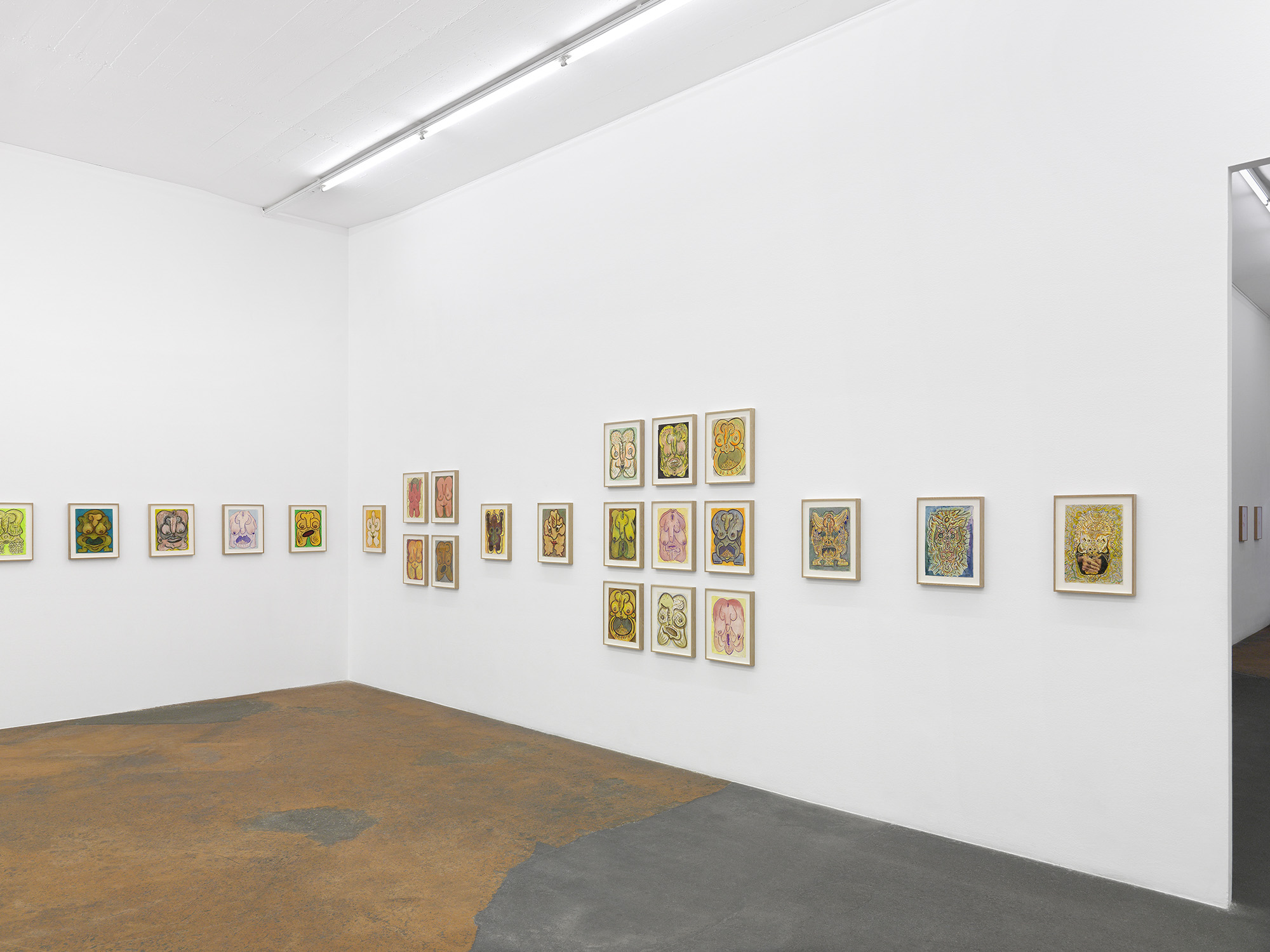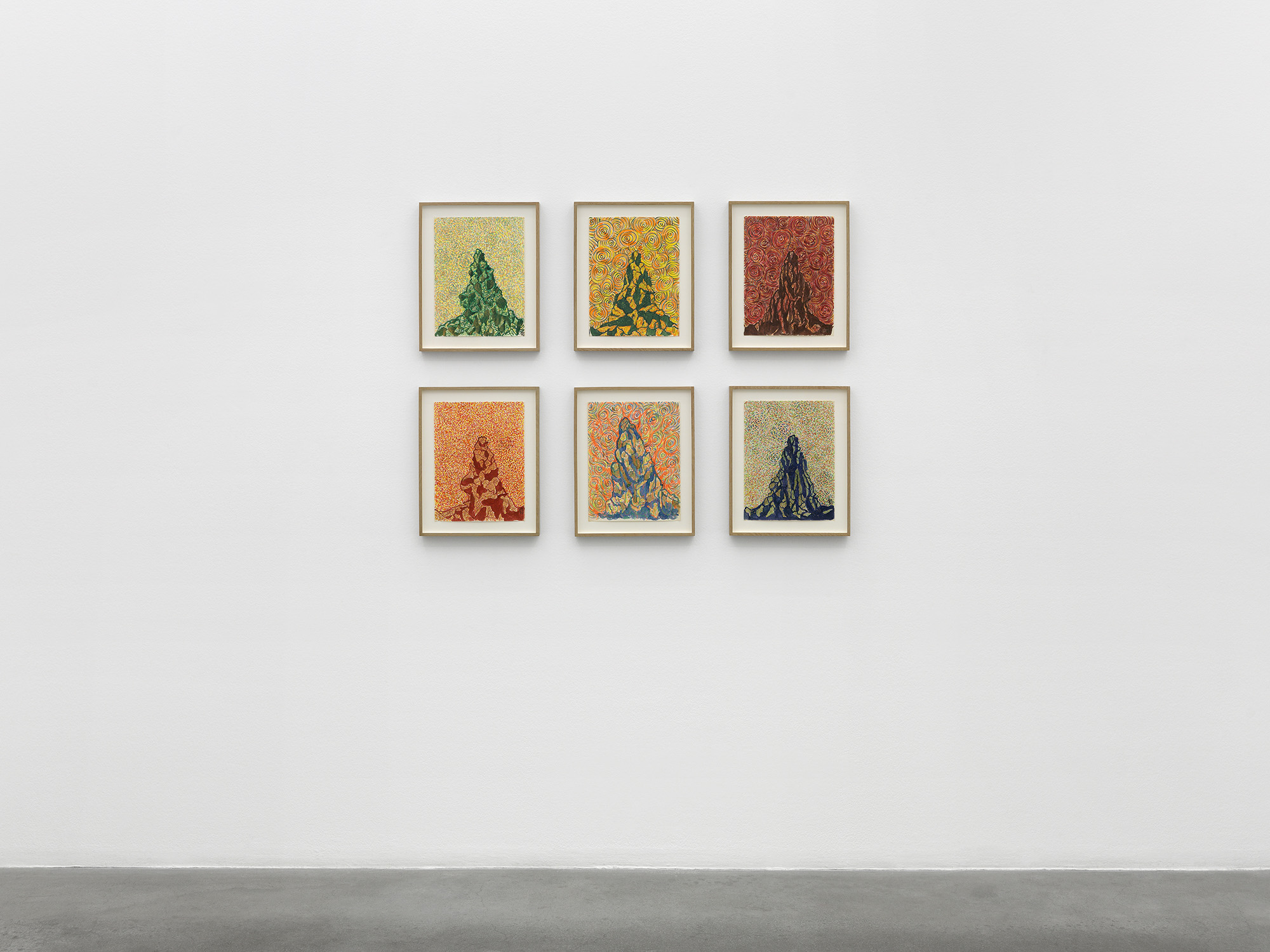Living and working together as part of the late 1960s Toronto counterculture, AA Bronson (b. Michael Tims, 1946, Vancouver), Felix Partz (b. Ronald Gabe, 1945, Winnipeg, d. 1994), and Jorge Zontal (b. Slobodan Saia-Levy, 1944, Parma, d. 1994) formalized their collaboration in 1969 as a single entity known as General Idea. From their earliest projects like staging of The 1970 Miss General Idea Pageant to their late activist initiatives around the AIDS crisis, General Idea explored multimedia, conceptual, and performance work as a tool for engaging with common culture and its repressions. A definitive retrospective of General Idea travelled in 2023-2024 from the National Gallery of Canada, Ottawa, to the Stedelijk Museum, Amsterdam, and the Gropius Bau, Berlin.
Less well-known are the group’s drawings, the vast majority of which have never been seen. The 250 drawings gathered together for this project were all produced by Jorge Zontal, who made them as a habitual practice during the group’s brainstorming meetings; however, given General Idea’s mandate for co-authorship (and as demonstrated by the “GI” signature affixed by Zontal shortly before his death) as well as the circumstances under which they were executed, they are considered to be collaborative. The drawings assumed a greater regularity after 1985, the year the group left Toronto, which felt increasingly isolated from the global art world, for New York. As the 1980s wore on, their early joie de vivre was tempered by the pervasive presence of AIDS. In Bronson’s words, it was a period “during which we had to face and somehow incorporate the illness and death of most of our friends, as well as Jorge and Felix themselves.” A number of AIDS-related works by General Idea were presented in adjacent rooms, including the rarely seen AIDS (Nauman) of 1991.
The drawings’ exhibition and the book that accompanies it were titled Ecce Homo to reference a 1923 publication by German artist George Grosz because, according to AA Bronson, “the anti-Semitism in Grosz’s narrative is mirrored by the homophobia in ours.” The pain and gravity are immediately felt in the drawings, whether in a series of silhouetted figures shot through with holes or the latest drawings where, during Zontal’s last months and as he was going blind, he represented the black floaters in his eyes as cockroaches. These darker strains are leavened by “fluffer” moments as figures familiar from General Idea’s lexicon (high heels, heraldic symbols, floating lips, and prancing poodles) join the fray.
Although drawn by hand, the repetition of specific motifs follows a logic that is akin to General Idea’s own penchant for mass reproduction and that echo the virality of their AIDS works. In their mutability and insistent flow, the drawings on view are a fascinating window into General Idea’s distinct artistic vision and unique notions of authorship, exposing representation’s inadequacy while acknowledging its urgency.
- The exhibition of General Idea’s drawings was organized by Lionel Bovier and Claire Gilman, Chief Curator of The Drawing Center, New York, where it was first presented








